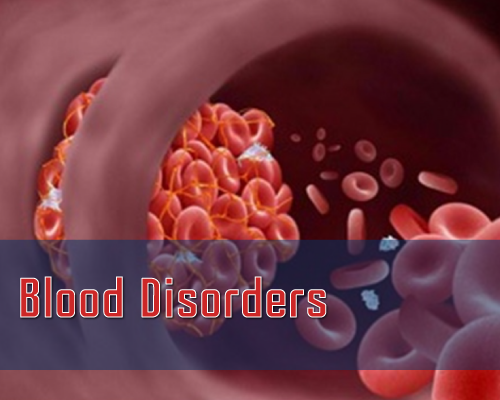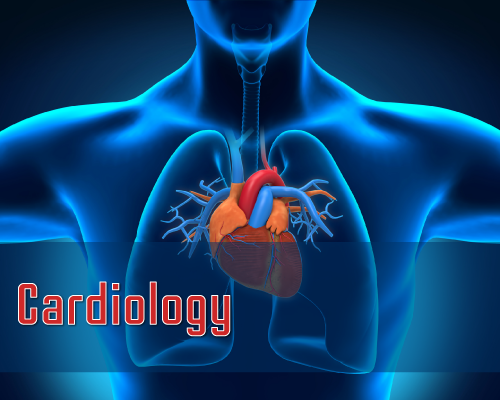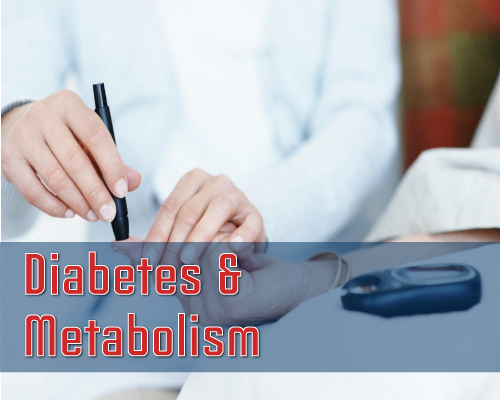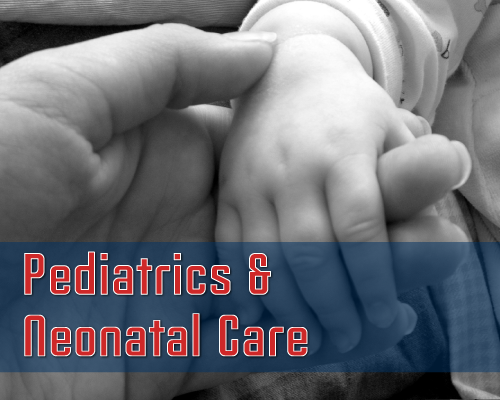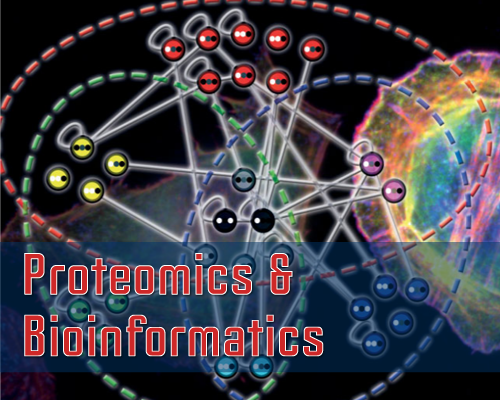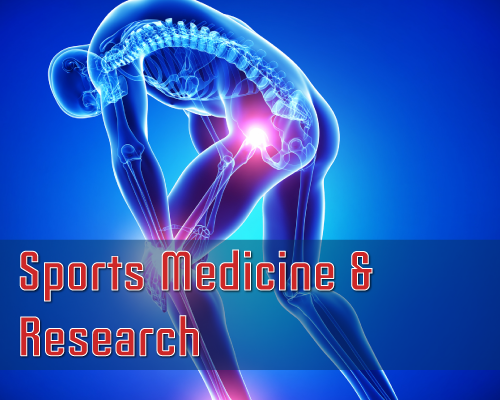Samanta de S. Mattos1 and 1 and Denise T.Giannini2*
1Resident of Clinical Nutrition, Adolescent Health Study Center, Graduated from University of the State of Rio de Janeiro; Nutrition Division, Pedro Ernesto University Hospital, University of the State of Rio de Janeiro, Rio de Janeiro, Brazil
2Nutrition Division, University Hospital Pedro Ernesto, University of the State of Rio de Janeiro, Rio de Janeiro, Brazil
*Address for Correspondence: Denise T. Giannini, Nutrition Division, University Hospital Pedro Ernesto, Avenida 28 de Setembro, 77,Rio de janeiro, RJ, Brazil, CEP: 20559-900; E-mail: [email protected]
Dates: Submitted: 21 June 2017; Approved: 24 July 2017; Published: 24 July 2017
Citation this article: de S. Mattos S, Giannini DT. Association between Calcium Intake and Dysglycemia in Adolescents. J Res Diabetes Metab. 2017;3(1): 029-035.
Copyright: © 2017 Giannini DT, et al. This is an open access article distributed under the Creative Commons Attribution License, which permits unrestricted use, distribution, and reproduction in any medium, provided the original work is properly cited.
Keywords: Dietetics; Calcium; Insulin; Adolescents
Abstract
Objective: To evaluate dietary calcium intake and its relationship with anthropometric measures, calcium metabolism and glucose profile in adolescents.
Method: Cross-sectional study of the observational character composed of 106 adolescents of both sexes. The anthropometric measures evaluated were weight, height and waist circumference. Nutritional status was classified by body mass index by age and sex. Dietary intake was assessed by the food registry 3-day and data were calculated using Avanutri® Software. For the evaluation of glucose and calcium metabolism, fasting blood glucose, glycated hemoglobin, insulin, serum calcium, vitamin D, and parathyroid hormone.
Results: Adolescents who consumed below 302 mg/ day of calcium had a significantly higher mean of glycated hemoglobin (mean: 5.7% Vs. 5.3%; p=0.02) and insulin (mean: 29.8 µU/mL Vs 21.7 µU/mL; p= 0.05). It was found that the mean parathyroid hormone was significantly higher in adolescents who consumed below the 50th percentile of calcium 45.2 Vs 37.7 (p < 0.001). In overweight adolescents who consumed below 302 mg/ day presented higher values of body mass index (34.2 km/m2 Vs 30.2 km/m2; p = 0.03) and a negative correlation between parathyroid hormone and calcium(r = 0.28; p = 0.01).
Conclusions: Adolescents who consumed below 302 mg/day of calcium had higher glycated hemoglobin and insulin and an increase in parathyroid hormone. In overweight, adolescents who consumed below 302 mg/ day of calcium had higher adiposity and a negative correlation with parathyroid hormone.
Introduction
Calcium is the fifth most abundant element in the human body and is essential for life. It plays a fundamental role in many physiological processes, including skeletal mineralization [1]. Dietary calcium intake is one of the main determinants of calcium balance, particularly during adolescence, period of accumulation of bone mass, and it is of fundamental importance to evaluate the nutritional, environmental and social aspects involved in calcium intake [1,2].
Calcium homeostasis is largely regulated through an integrated hormonal system that controls the transport of calcium in the intestine, kidney and bone. It involves two calcium regulating hormones, vitamin D and Parathyroid Hormone (PTH) [3]. When a decrease in serum calcium occurs, it inactivates the calcium receptor in the parathyroid cell and increases the secretion of PTH, which restores serum calcium by activating the parathyroid receptor in the bone to increase calcium reabsorption and in the kidney to increase reabsorption of tubular calcium. In the kidney, increased secretion of PTH increases its calcium-restoring effect by increasing the secretion of calcitriol which, acting on the vitamin D receptor in the intestine, increases the active absorption of calcium and increases the reabsorption of calcium in the bone. This integrated hormonal response restores serum calcium and closes the negative feedback [1].
Studies have investigated calcium aid in the prevention and treatment of obesity. Modulation of adiposity by dietary calcium is mediated from calcitriol which regulates calcium flux in the adipocyte. One of the mechanisms of action and its low quality, which can stimulate the influx of calcium in the adipocytes, can promote lipogenesis and inhibit a lipolysis, increasing a synthesis of Fatty Acids (FA) and inhibiting the sensitive hormone lipase [4-9].
Calcitriol inhibits the expression of the uncoupling protein 2 (UCP2), responsible for the transport and mitochondrial oxidation of FA, which may contribute to the reduction of lipid oxidation and increase the accumulation of lipids with diets low in calcium [6,7]. Calcitriol also stimulates the expression of the 11-hydroxysteroid dehydrogenase-1 enzyme, which catalyzes the conversion of cortisone to cortisol in adipocytes [6,10].
Another proposed mechanism would be that dietary calcium promotes the formation of insoluble soaps between calcium and FA in the gastrointestinal tract, or by the formation of precipitates with phosphate and bile acids, which results in a decrease in dietary digestible energy and increase in fecal excretion of fat [11,12].
Studies suggest that calcium metabolism and maybe other components of dairy products could contribute to altering energy balance and thus play a role in weight regulation, since the main risk factor for insulin resistance and type 2 diabetes is obesity [5,13,14].
In this context, the objective of this study was to evaluate the dietary calcium intake and its relationship with the anthropometric measures, the glycidic profile and the hormones involved in the calcium homeostasis in adolescents.
Methods
This is a descriptive cross-sectional study of observational character, whose convenience sample was composed of adolescents between 12 to 18 years, of both sexes, in ambulatory care of secondary attention in Núcleo de Estudos da Saude do Adolescente (NESA)-Hospital Universitario Pedro Ernesto (HUPE) in Rio de Janeiro, from March 25, 2015 to September 30, 2016.
The adolescents who signed the free and informed consent form were included, with responsible permission. We excluded adolescents with hormonal or drug-induced diseases that could interfere with the absorption of dietary calcium, follow-up patients for rheumatological and renal diseases, patients with autoimmune diseases, patients with human immunodeficiency virus, presenting eating disorder, in use of dietary supplements, disabsorptive diseases.
Anthropometry was composed of measures of weight, height and waist circumference (WC). To measure the weight (kg) was used the digital scale of the brand the Micheliti®, with a precision of 0.1 kg and a maximum of 200 kg, with the barefoot adolescent, in light clothes, in an orthostatic position [15]. For stature (cm), it was used the stadiometer fixed to the wall of the Sanny® mark, with a precision of 0.1 cm, with the evaluated foot, barefoot, with the body in anatomical position and head parallel to the ground, according to the plane From Frankfurt [15].
Body Mass Index (BMI) was calculated using the weight (kg)/ height (m2) relationship, an assessment of the nutritional status of the adolescents occurred through the requirements established by WHO, and as well as a process as eutrophic that characterize BMI/I Between the z-score ≥ - 2 and ≤ + 1, overweight between the z-score > + 1 and ≤ + 2 and obesity z-score ≥ + 2 [16]. Measurements WC were performed using a flexible and inelastic tape with a 0.1 centimeter scale at the midpoint between the last costal arch and the iliac crest at the end of normal expiration. They were classified according to the proposed Fernandez, et al. [17], being the WC elevated that ≥ to the percentile 75. The Waist-to-Stature Ratio (WSR) was calculated by dividing the WC (cm) by height (cm) and values ≥ 0.5 were indicative of elevated [18].
The laboratory tests were: fasting glycemia, glycated hemoglobin (HbA1c), insulin, calcium, vitamin D and PTH. The blood test was performed with a previous fast of 12 hours.
The fast glycemia was measured enzymatic hexokinase method, to HbA1c was used the high performance liquid chromatography method; Insulin, serum PTH and vitamin D were measured by the electrochemiluminescence method. For serum calcium, the cresolphthalein method was used.
For the classification of dysglycemia, fasting blood glucose ≥ 100 mg/ dL, or presence of type 2 DM, as considered by the Guideline of the Brazilian Society of Diabetes [19]. To evaluate the Insulin Resistance (IR), the HOMA-IR (Homeostatic Model Assessment – Insulin Resistance) through the formula: HOMA-IR = fasting blood glucose (mmol/ dL) x Fasting insulinemia (µU/ mL)/ 22.5, values above 3.16 was considered IR [20] and the, HbA1c ≥ 6.4%, insulin > 20µU/ mL. Calcium was considered within the range of normality 8.6-10.2 mg/ dL and the serum PTH, the normal range was 15-65 ng/ mL. Vitamin D was categorized into three levels: deficient for values <20 ng/ mL, insufficient 21-29 ng/ mL and adequate >30ng/ mL [21].
For the food survey I used the food registry 3 day. Calculation of the total energetic value, carbohydrates, proteins, lipids, fibers, calcium, magnesium and sodium using Avanutri® Software version 4.0. For the nutrient adequacy analysis, were used the recommendations of the Institute of Medicine [22], called Acceptable Distribution of Macronutrients (AMDR) for carbohydrates, proteins, total lipids, and dietary fiber, sodium, and calcium were analyzed according to the values of Adequate Intake (AI) and magnesium at the recommended daily intake (DRI). According to the AMDR were used: carbohydrates 45-65%, proteins 10-30%, lipids 20-35%; Adequate intake was used for fiber, girls 26 g/ day and boys 38 g / day; Sodium 1,500 mg/ day; Calcium 1,300mg/day; And magnesium at DRI, girls 360 mg/ day and boys 410 mg/ day.
The data collected were stored in Excel spreadsheet software version 7 and later analyzed using STATA software version 14. The continuous variables described were evaluated by mean and standard deviation and the categorical variables by proportion. The variables were tested using the Kolgomorov-Smirnov test to verify if the distribution is normal. Those with normal distribution were compared using Student’s t-test and those with non-parametric distribution using the Mann-Whitney test. For the categorical variables, was used the chi-square test. Patients were divided according to calcium intake, using the 10 and 50 percentiles. For all analyzes, a value of p ≤ 0.05 for significance was adopted.
The study was approved by the research ethics committee of the HUPE, registry CEP/HUPE: 3051/2011; CAAE: 0193.0.228.000-11. The adolescents and those responsible signed the Informed Consent Form.
Results
A total of 106 patients participated in the study, of which 55 (52%) were female and 51 (48%) were male, with a mean age of 14.4 ± 1.8 years. The studied population had 30 hypertensive patients (30.3%), 15 dysglycemia (14.3%) and 80 sedentary patients (76.2%).
According to the nutritional status, 55.7% (n = 59) were obese, 30.2% (n = 32) overweight and 14.1% (n = 15) eutrophic. The mean BMI was 29.0 kg/ m2 (SD ± 6.6) without statistical difference between the sexes. The averages of the studied variables are presented in table 1.
| Table 1: Mean values of the anthropometric and metabolic characteristics of adolescents stratified by sex. | ||||
| Variables | Total (n= 106) |
Female (n= 55) |
Male (n= 51) |
p-value |
| Mean (± SD) | ||||
| Age (years) | 14.4 (± 1.8) | 14.7 (± 1.8) | 14.1 (± 1.7) | 0.02 |
| Weight (kg) | 77.9 (± 21.7) | 77.3 (± 21.2) | 78.5 (± 22.5) | 0.38 |
| Height (m) | 1.63 (± 0.1) | 1.61 (± 0.1) | 1.66 (± 0.1) | <0.001 |
| BMI (kg/m2) | 29.0 (± 6.6) | 29.7 (± 6.9) | 28.3 (± 6.3) | 0.13 |
| WC (cm) | 90.1 (± 15.7) | 88.6 (± 15.1) | 91.7 (± 16.3) | 0.15 |
| WSR | 0.55 (± 0.1) | 0.55 (± 0.1) | 0.55 (± 0.1) | 0.44 |
| Glycemia (mg/dL) | 89.5 (± 13.6) | 86.6 (± 10.1) | 92.7 (± 16.2) | 0.01 |
| Hb1AC (%) | 5.4 (± 0.6) | 5.4 (± 0.5) | 5.3 (± 0.5) | 0.44 |
| Insulin (µU/mL) | 22.6 (± 13.8) | 23.8 (± 15.3) | 20.9 (± 11.4) | 0.16 |
| HOMA-IR | 4.1 (± 3.7) | 4.5 (± 3.9) | 3.8 (± 3.3) | 0.16 |
| 25(OH)D (ng/mL) | 28.1 (± 10.3) | 28.5 (± 11.5) | 27.7 (± 8.8) | 0.37 |
| PTH (ng/mL) | 38.3 (± 13.3) | 38.3 (±13.9) | 38.8 (±13.4) | 0.44 |
SD: Standard Deviation; BMI: Body Mass Index; WC: Waist Circumference; WCE: Waist-to-Stature Ratio; Hb1AC: Glycemic Hemoglobin; HOMA-IR: Insulin Resistance Index; 25(OH)D: D Vitamin; PTH: Parathormone. |
||||
When we analyzed the consumption, we observed that the intake of calories and protein was higher in boys, and also of fibers and magnesium (Table 2). The distribution of macronutrient intake was adequate (total of the sample: carbohydrate 52%, protein 18%, lipid 30%) in both sexes, being in the female: carbohydrate 53%; 18% protein; lipid 29% and male: carbohydrate 54%; 18% protein; lipid 28% of the total energetic value of the diet. However, in relation to fiber intake (female: 48%, male: 39%), magnesium (female: 40%, male: 47%) and calcium (female: 100%, male: 98%) were inadequate in both sexes and high sodium intake (female: 129%, male: 132%).
The median calcium intake of the population was 508.4 mg (IQ 373.5 mg -682.5 mg), being lower in girls (470.1 mg; IQ: 339.5 mg – 634.2 mg) than in boys (538.6 mg; IQ: 383.4 mg - 747.3 mg), but without statistical difference (p = 0.06) (Table 2).
| Table 2: Estimated median total energy intake and nutrients stratified by sex. | ||||
| Variables | Total | Female | Male | p-value |
| Median (IQR) | ||||
| Energy (kcal/day) | 1909 (1545-2282) | 1792 (1430-2163) | 2027 (1766-2314) | 0.04 |
| Carbohydrate (g/day) | 245 (207-302) | 234 (189-295) | 278 (224-307) | 0.10 |
| Protein (g/day) | 83 (65-104) | 74 (62-98) | 94 (75-109) | 0.007 |
| Lipid (g/day) | 61 (50-73) | 58 (47-73) | 66 (53-73) | 0.25 |
| Total fiber (g/day) | 13 (11-18) | 12 (10-17) | 15 (11-19) | 0.03 |
| Calcium (mg/day) | 508 (373-682) | 470 (339-634) | 539 (383-747) | 0.06 |
| Magnesium (mg/day) | 172 (124-207) | 143 (114-192) | 192 (161-210) | <0.001 |
| Sodium (mg/day) | 1948 (1516-3147) | 1936 (1457-2377) | 1972 (1567-2588) | 0.33 |
| IQR: Interquartile Range (IQR) | ||||
The study found that 7 (46.7%) eutrophic adolescents, 16 (50%) overweight and 29 (48.3%) obese consumed below the median of calcium intake, however no difference was observed statistically in nutritional status in Calcium intake (p = 0.97).
About 22 (43%) male adolescents and 30 (54%) female sex consume below the median of calcium, being more frequent in the age of 12 to 14 years (n: 13; 42%) in males, the opposite Occurred in females, being higher among the 15 to 17 year olds (n: 19; 58%).
In this study, adolescents who consumed less than the median calcium had significantly higher parathormone levels (42.5 ng/ mL vs 34.3 ng/ mL, p = 0.003). Regarding consumption, they presented a reduced intake of fibers (13g Vs 16g; p = <0.001) and of magnesium (152 mg Vs 193 mg; p = <0.001).
Adolescents who consumed below the 10th percentile (<302 mg / day) had a significantly higher mean Hb1AC (5.7% Vs 5.3%, p = 0.01) and insulin (29.8 μU/ mL Vs. 21.7 μU/ mL, p = 0.05) (Table 2) and also presented lower intake of magnesium (112mg Vs 177mg; p< 0.001)(Table 3).
| Table 3: Anthropometric variables, biochemical, total energy intake and nutrients according to the calcium intake (10th percentile). | |||
| Variables | Consumption of Calcium | ||
| Mean (± SD) | |||
| < 302 mg/ dia (n= 10) | ≥ 302 mg/ dia (n= 96) | p-value | |
| Age (years) | 14.7 (± 1.4) | 14.4 (± 1.8) | 0.29 |
| Weight (kg) | 80.5 (± 20.6) | 77.6 (± 21.9) | 0.34 |
| Height (m) | 1.61 (± 0.1) | 1.63 (± 0.1) | 0.19 |
| BMI (kg/m2) | 31.2 (± 7.8) | 28.8 (± 6.5) | 0.13 |
| WC (cm) | 91.0 (± 15.7) | 90.0 (± 15.8) | 0.42 |
| WSR | 0.57(± 0.9) | 0.55 (± 0.8) | 0.28 |
| Glycemia (mg/dL) | 86.2 (± 9.8) | 89.9 (± 13.9) | 0.2 |
| Hb1AC (%) | 5.7(± 0.5) | 5.3 (± 0.5) | 0.01 |
| Insulin (µU/mL) | 29.8 (± 14.2) | 21.7 (± 13.5) | 0.05 |
| HOMA-IR | 5.2 (± 3.9) | 4.0 (± 3.6) | 0.17 |
| 25(OH)D (ng/mL) | 22.9 (± 8.6) | 28.7 (± 10.4) | 0.06 |
| PTH (ng/mL) | 45.2 (± 16.7) | 37.7 (± 13.1) | 0.06 |
| Total energy intake and nutrients | Median (IQR) | ||
| Energy (kcal/day) | 1325 (1047-1577) | 1960 (1671-2314) | <0.001 |
| Carbohydrate (g/day) | 161 (125-221) | 260 (223-307) | 0.004 |
| Protein (g/day) | 62 (59-69) | 85 (67-105) | 0.01 |
| Lipid (g/day) | 42 (30-54) | 63 (51-74) | <0.001 |
| Total fiber (g/day) | 10 (6-12) | 14 (11-18) | 0.004 |
| Calcium (mg/day) | 218 (157-238) | 535 (396-705) | <0.001 |
| Magnesium (mg/day) | 112 (94-128) | 177 (136-209) | <0.001 |
| Sodium (mg/day) | 1637 (1256-2117) | 1965 (1516-2432) | 0.20 |
| SD: Standard Deviation; BMI: Body Mass Index; WC= Waist Circumference; WCE= Waist-to-Stature Ratio; Hb1AC: Glycemic Hemoglobin; HOMA-IR: Insulin Resistance Index; 25(OH)D: D Vitamin; PTH: Parathormone; IQR: Interquartile Range (IQR). | |||
| Table 4: Mean values of the anthropometric variables,biochemistry of adolescents with excess weight according to the calciumintake according to the 10th percentile. | |||
| Variables | Consumptionof Calcium | ||
| Mean(± SD) | |||
| <302 mg/dia (n= 8) | ≥302 mg/dia (n= 83) | p-value | |
| Age(years) | 14.6(± 1.5) | 14.3(± 1.8) | 0.29 |
| Weight(kg) | 88.2(± 13.8) | 81.6(± 20.5) | 0.18 |
| Height(m) | 1.61(± 0.7) | 1.64(± 1.0) | 0.79 |
| BMI(kg/m2) | 34.2(± 5.2) | 30.2(± 5.8) | 0.03 |
| WC(cm) | 97.5(± 8.5) | 93.4(± 13.9) | 0.2 |
| WSR | 0.61(± 0.5) | 0.57(± 0.8) | 0.08 |
| Glycemia(mg/dL) | 87.4(± 9.7) | 90.5(± 14.7) | 0.71 |
| Hb1AC(%) | 5.7(± 0.5) | 5.3(± 0.5) | 0.01 |
| Insulin(µU/mL) | 29.8(± 14.2) | 22.9(± 13.6) | 0.09 |
| HOMA-IR | 6.5(± 3.3) | 4.4(± 3.7) | 0.06 |
| 25(OH)D(ng/mL) | 22.9(± 8.6) | 27.9(± 9.8) | 0.08 |
| PTH(ng/mL) | 45.3(± 16.7) | 38.0(± 13.2) | 0.07 |
| SD: Standard Deviation; BMI: Body Mass Index; WC: Waist Circumference;WCE: Waist-to-Stature Ratio; Hb1AC: GlycemicHemoglobin; HOMA-IR: Insulin Resistance Index; 25(OH)D: D Vitamin; PTH:Parathormone. | |||
There was a statistically significant difference in Hb1AC (p = 0.019) in overweight patients who consumed less than the 10th percentile of calcium. A negative correlation was found between PTH and calcium (r = - 0.28; p = 0.018).
Discussion
The estimated average daily calcium intake of the adolescents studied is well below the current recommendations, but does not differ much from the situation found among other populations of adolescents. Several studies that evaluated calcium intake by adolescents found an intake lower than that recommended by DRI [23-28].
In addition to the inadequacy of calcium, it was also verified of fibers and magnesium. This finding is consistent with other studies that verified low ingestion as Martyn-Nemeth, et al. [28] found that mean fiber and magnesium intake were below recommended levels for age and sex. When analyzing adolescents with lower calcium intake, also showed lower intakes of fiber, selected vitamins (riboflavin, folate, vitamin A and vitamin D) and mineral ingestion (Magnesium, phosphorus, potassium, iron, and zinc)[23]. The low intake of fiber and magnesium may reflect a low consumption of fruits, vegetables and grains. Pereira, et al. [29] found a positive association between dairy consumption with whole grains, fruits, vegetables, saturated fat intake, and inversely associated with intake of sugary soft drinks.
In this study it was verified when we excluded eutrophic patients that overweight adolescents consuming below the 10th percentile of calcium had higher adiposity, corroborating with other studies. The study of Carruth & Skinner [30] found a relationship between higher calcium intake or dairy products and lower body fat. Zemel, et al. [4], appeared with the hypothesis of calcium action in the stimulation of lipolysis and inhibition of liponeogenesis due to the increase in the production of PTH and vitamin D. In addition, it was identified the probable contribution of calcium in reducing energy efficiency due to favoring thermogenesis and increased fecal excretion of fatty acids in view of the formation of insoluble soaps in the intestine [5].
The study of Tylavsky, et al. [23] also found that African-American adolescents who presented lower calcium intake had a higher percentage of fat mass in relation to the groups that had intermediate and greater consumption. When analyzing five clinical studies of calcium intake to investigate associations between calcium intake and body weight, found that a calcium intake difference of 1000 mg is associated with a difference of less than 8 kg in mean body weight [31].
Adolescents who consumed below the 10th percentile of calcium had higher values of Hb1AC and insulin. Santos, et al. [32] found an inverse correlation between calcium intake and trunk fat (r = - 0.287, P = 0.04), insulin concentration (r = -0.360 p = 0.01) and insulin resistance measured by HOMA-IR (r = -0.365, p = 0.01). The study of Alarcon, et al. [33] found that children classified with insulin resistance had lower intakes of calcium. When evaluating patients with obesity, found that participants on a high milk diet had a significant increase in insulin sensitivity, as reductions in both circulating insulin (44%) as in the area under the glucose tolerance curve (27%) [34]. Pereira, et al. [29]. In their study also found that milk consumption was inversely associated with the incidence of all components of insulin resistance syndrome among overweight individuals. Adolescence is a period of risk for the onset of insulin resistance, due to a physiological reduction in insulin sensitivity that is compensated by the increase in its secretion, and is exacerbated by adiposity [35,36]. Excess weight is associated with increased risk of developing insulin resistance, but not all individuals with obesity will develop glucose intolerance [37,38]. The studied population had about 86% of overweight adolescents, which may also justify higher insulin values.
When analyzing the data only with overweight patients, a negative correlation was found between PTH and calcium. Other studies verify the same relation as Patel et al. [5] who observed that healthy adolescents with calcium intake above the median (> 520 mg / day) had lower values of intact serum PTH for a given serum vitamin D concentration, whereas those with calcium intake below the median had higher values. Steingrimsdottir, et al. [39] showed low vitamin D levels (<10 ng / mL), calcium intake <800 mg / day Vs >1200 mg / day, was significantly associated with higher serum PTH (p = 0.04).
The study presented limitations on the size of the sample, which when presenting a reduced number of eutrophic may have reduced to the differences found between the groups.
Conclusion
This study showed that adolescents who consumed below the 10th percentile of calcium had a significantly higher mean of Hb1AC and insulin. And it was found that adolescents who consumed less than the median calcium had significantly higher values of PTH, but within the range of normality. And when the eutrophic patients were excluded, we observed that overweight patients consuming below the 10th percentile of calcium presented higher values of BMI. Further studies should be performed to determine the relationship between calcium intake and insulin resistance in adolescents.
References
- Peacock M. Calcium metabolism in health and disease. Clin J Am Soc Nephrol. 2010; 5:23-30. https://goo.gl/FVjWhe
- SilvA AG, Cozzolino SM. Biodisponibilidade de nutrientes. 5ª ed. São Paulo: Manole; 2005.
- Zemel MB, Shi H, Greer B, Dirienzo D, Zemel PC. Regulation of adiposity by dietary calcium. FASEB J. 2000; 14: 1132-1138. https://goo.gl/tm9d7Q
- Zemel MB. Regulation of adiposity and obesity risk by dietary calcium: mechanisms and implications. J Am Coll Nutr. 2002; 21: 156-151. https://goo.gl/xWJ9AD
- Patel P, Mughal MZ, Patel P, Yagnik B, Kajale N, Mandlik R, et al. Dietary calcium intake influences the relationship between serum 25-hydroxyvitamin D3 (25OHD) concentration and parathyroid hormone (PTH) concentration. Arch Dis Child. 2016; 101: 316-319. https://goo.gl/8Ee51B
- Parikh SJ, Yanovski JA. Calcium intake and adiposity. Am J Clin Nutr. 2003; 77: 281-287. https://goo.gl/igkTfi
- Zemel MB. The Role of Dairy Foods in Weight Management. J Am Coll Nutr. 2005; 24: 537-546. https://goo.gl/XCPXuF
- Torres MR, Ferreira Tda S, Carvalho DC, Sanjuliani AF. Dietary calcium intake and its relationship with adiposity and metabolic profile in hypertensive patients. Nutrition. 2011; 27: 666-671. https://goo.gl/pE8D95
- Astrup A, Kristensen M, Gregersen NT, Belza A, Lorenzen JK, Due A, Larsen TMA, et al. Can bioactive foods affect obesity? Ann N Y Acad Sci. 2010; 1190: 25-41. https://goo.gl/cHvBXj
- Morris KL, Zemel MB. 1,25-Dihydroxyvitamin D3 modulation of adipocyte glucocorticoid function. Obes. Res. 2005; 13: 670-677. https://goo.gl/yVYvrg
- Yuangklang C, Wensing T, Lankhorst AE, Lemmens AG, Fielmich-Bouman XM, Yuang klang C, et al. Cholate and deoxycholate counteract the calcium-induced lowering of fat digestion in rats. J Anim Physiol Anim Nutr (Berl). 2005; 89: 337-341. https://goo.gl/dre9L2
- Christensen R, Lorenzen JK, Svith CR, Bartels EM, Melanson EL, Saris WH, et al. Effect of calcium from dairy and dietary supplements on faecal fat excretion: a meta-analysis of randomized controlled trials. Obes Rev. 2009; 10: 475-486. https://goo.gl/1xgYog
- Faria ER, Franceschini Sdo C, Peluzio Mdo C, Santana LF, Priore SE. Correlacao entre variaveis de composicao corporal e metabolica em adolescentes do sexo feminino. Arq Bras Cardiol. 2009; 93: 119-127. https://goo.gl/uVd7ZJ
- D'adamo E, Caprio S. Type 2 diabetes in youth: epidemiology and pathophysiology. Diabetes Care. 2011; 34: 161-165. https://goo.gl/ycWZm6
- Lohmann TG, Roche AF, Martorell R. Anthropometric standardization reference manual. Champaign: Human Kinetics. 1988. https://goo.gl/t3Hd6L
- World Health Organization. Growth reference data for 5-19 years [Internet]. WHO reference 2007. https://goo.gl/DSuS8
- Fernandez JR, Redden DT, Pietrobelli A, Allison DB. Waist circumference percentiles in nationally representative samples of African-American, European-American, and Mexican-American children and adolescents. J Pediatr. 2004; 145: 439-444. https://goo.gl/GhkjGm
- Ashwell M, Hsieh Sd. Six reasons why the waist-to-height ratio is a rapid and effective global indicator for health risks of obesity and how its use could simplify the international public health message on obesity. Int J Food Sci Nutr. 2005; 56: 303-307. https://goo.gl/1rDM5o
- Diretriz da Sociedade Brasileira de Diabetes. DIRETRIZES SBD | 2015-2016. São Paulo: A.C. Farmacêutica, 2016. https://goo.gl/uC2qdT
- Keskin M, Kurtoglu S, Kendirci M, Atabek Me, Yazici C. Homeostasis Model Assessment Is More Reliable Than the Fasting Glucose/Insulin Ratio and Quantitative Insulin Sensitivity Check Index for Assessing Insulin Resistance Among Obese Children and Adolescents. Pediatrics. 2005; 115: 500-3. https://goo.gl/WGz9ys
- Holick MF. Vitamin D status: measurement, interpretation, and clinical application. Ann Epidemiol. 2009; 19: 73-78. https://Goo.Gl/Kdwfwq
- Institute of Medicine (IOM). Dietary Reference Intakes for Calcium and Vitamin D, 2011. https://goo.gl/Sgar8y
- Tylavsky FA, Cowan PA, Terrell S, Hutson M, Velasquez-Mieyer P. Calcium Intake and Body Composition in African-American Children and Adolescents at Risk for Overweight and Obesity. Nutrients. 2010; 2: 950-964. https://goo.gl/TnxpTw
- Peters BS, Verly E JR, Marchioni DM, Fisberg M, Martini LA. The influence of breakfast and dairy products on dietary calcium and vitamin D intake in postpubertal adolescents and young adults. J Hum Nutr Diet. 2012; 25: 69-74. https://goo.gl/qkMjQn
- Oliveira CF, Silveira CR, Beghetto M, Mello PD, Mello ED. Avaliacao do consumo de calcio por adolescentes. Rev. Paul. Pediatr. 2014; 32: 216-220. https://goo.gl/VDMjca
- Assumpcao D, Dias MR, Barros MBA, Fisberg RM, Filho AAB. Ingestao de calcio por adolescentes: inquérito de saúde de base populacional. J. Pediatr. 2015; 92: 251-259. https://goo.gl/zpqvJ1
- Souza AM, Barufaldi LA, Abreu GA, Giannini DT, Oliveira CL, Santos MM, et al. ERICA: intake of macro and micronutrients of Brazilian adolescents. Rev. Saude Publica. 2016; 50. https://goo.gl/wDfBkn
- Martyn-Nemeth P, Quinn L, Menon U, Shrestha S, Patel C, Shah G. Dietary Profiles of First-Generation South Asian Indian Adolescents in the United States. J Immigr Minor Health. 2017; 19: 309-317. https://goo.gl/VvvsDi
- Pereira MA, Jacobs DRJ, Horn LV, Slattery ML, Kartashov AI, Ludwig DS. Dairy Consumption, Obesity, and the Insulin Resistance Syndrome in Young Adults the CARDIA Study. JAMA. 2002; 287: 2081-2089. https://goo.gl/bzX59M
- Carruth BR, Skinner JD. The role of dietary calcium and other nutrients in moderating body fat in preschool children. Int J Obes Relat Metab Disord. 2001; 25: 559-566. https://goo.gl/RDkPAF
- Davies KM, Heaney RP, Recker RR, Lappe JM, Barger-Lux MJ, Rafferty K, et al. Calcium Intake and Body Weight. J Clin Endocrinol Metab. 2000; 85: 4635-4638. https://goo.gl/iyQzR8
- dos Santos LC, de Pádua Cintra I, Fisberg M, Martini LA. Calcium intake and its relationship with adiposity and insulin resistance in post-pubertal adolescents. J. Hum. Nutr. Diet. 2008; 21: 109-116. https://goo.gl/pLtkfQ
- Lopez-Alarcon M, Perichart-Perera O, Flores-Huerta S, Inda-Icaza P, Rodriguez-Cruz M, Armenta-Alvarez A, et al. Excessive Refined Carbohydrates and Scarce Micronutrients Intakes Increase Inflammatory Mediators and Insulin Resistance in Prepubertal and Pubertal Obese Children Independently of Obesity. Mediators Inflamm. 2014 ; 2014: 849031. https://goo.gl/iTYuwt
- Zemel MB, Thompson W, Milstead A, Morris K and Campbell P. Calcium and Dairy Acceleration of Weight and Fat Loss during Energy Restriction in Obese Adults. Obes Res. 2004; 12: 582-590. https://goo.gl/U2BJ7e
- Amiel SA, Sherwin RS, Simonson Dc, Lauritano AA, Tamborlane WV. Impaired insulin action in puberty: a contributing factor to poor glycemic control in adolescents with diabetes. N Engl J Med. 1986; 315: 215-219. https://goo.gl/8nfrG7
- Caprio S, Plewe G, Diamond Mp, Simonson Dc, Boulware SD, Sherwin RS, Tamborlane WV. Increased insulin secretion in puberty: a compensatory response to reductions in insulin sensitivity. J Pediatr. 1989; 114: 963-96. https://goo.gl/rxHmnh
- Lotta LA, Abbasi A, Sharp SJ, Sahlqvist AS, Waterworth D, Brosnan JM, et al. Definitions of metabolic health and risk of future type 2 diabetes in BMI categories: a systematic review and network meta-analysis. Diabetes Care. 2015; 38: 2177-2187. https://goo.gl/rqtn4k
- Lee JM, Gebremariam A, Vijan S and Gurney JG. Excess body mass index-years, a measure of degree and duration of excess weight, and risk for incident diabetes. Arch Pediatr Adolesc Med. 2012; 16: 42–48. https://goo.gl/jbpzPk
- Steingrimsdottir L, Gunnarsson O, Indridason OS, Franzson L and Sigurdsson G. Relationship between Serum Parathyroid Hormone Levels, Vitamin D Sufficiency, and Calcium Intake. JAMA. 2005; 294: 2336-2341. https://goo.gl/m1PyUD
Authors submit all Proposals and manuscripts via Electronic Form!


